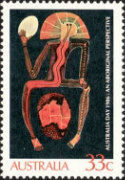History
Timeline results for
Found 1175 results for your search. Showing page 21 of 59.
1983
-
Wesley Lanhupuy (Australian Labor Party), from central coastal Arnhem Land, is elected to the Northern Territory Legislative Assembly representing the electorate of Arnhem.
-
Aboriginal Land Rights Act (NSW) recognises dispossession and dislocation of NSW Aboriginal people with land tax funding as compensation, and sets up a 3-tiered system of Aboriginal Land Councils (state, regional and local).
-
The Senate Standing Committee on Constitutional and Legal Affairs, in its report Two Hundred Years Later, rejects the idea of a treaty because it believes that the Aboriginal peoples were not a sovereign entity and so they could not enter into a treaty with the Commonwealth.
The Standing Committee favours a compact which could eventually be inserted into the Constitution by referendum. (The word "compact" is used here with the meaning of "a formal agreement between two or more parties, states, etc.", or "a contract".)
-
The Aboriginal Child Placement Principle, developed principally due to the efforts of Aboriginal and Islander Child Care Agencies (AICCAs) during the 1970s, is incorporated in NT welfare legislation to ensure that Indigenous children are placed with Indigenous families when adoption or fostering is necessary. This is followed in NSW (1987), Victoria (1989), South Australia (1993), Queensland and the ACT (1999), Tasmania (2000) and Western Australia (2006).
-
Prime Minister Bob Hawke stops negotiations, withdraws funding from the National Aboriginal Conference and shuts down the treaty process. Aboriginal attitudes to the idea of a treaty are also varied and far from unanimous in the 1970s and 80s.
1984
-
End of various "protection acts", which had existed since 1897 in Queensland. Under these laws Aboriginal people were effectively slave labourers; the wages for their labour were stolen by the State or never even claimed by the State from the employers. The issue of reparation remains unresolved.
-
The National Aboriginal Conference identifies 27 key aspects that were continually emerging in community consultations across this country.
-
Lowitja O’Donoghue, a pioneering nurse and future Aboriginal and Torres Strait Islander Commission (ATSIC) chairperson, receives the Australian of the Year award. ⇒ Famous Aboriginal people
-
Enrolment and voting in Commonwealth elections is now compulsory for Aboriginal people.
-
The first stamp issue for the Australian Bicentennial shows Aboriginal rock art. It is interesting to note that the series is titled "First Australians" which only much later was agreed to be one of the appropriate terms for Aboriginal people. The first stamp introduces the bicentennial symbol. Australia Post also published a booklet with detailed explanations of the stamps called The First Australians: Our Heritage in Stamps (Australian Bicentennial Collection).
The designs show stick figures (Cobar Region, NSW), Bunjil's Cave (Grampians, WA), Quirkan Gallery (Cape York, QLD), a Wandjina spirit with snake babies (Gibb River, Kimberley, WA), a rock python (Gibb River), a silver barramundi (Kakadu National Park, Alligator Rivers Area, NT) and a rock possum (Kakadu National Park).


Although the captions use "First Australians" they fail to explain the locations of the rock art, a lost opportunity to raise awareness of this rich cultural heritage.
1985
-
In the ‘Come to Canberra Campaign’ joint land councils from the Northern Territory and the States go to Parliament House, Canberra to protest against the proposed changes to the Aboriginal Land Rights Act of the Northern Territory and the inadequate provisions in Labor Prime Minister Bob Hawke’s visions of ‘Uniform National Land Rights’.
-
Commonwealth government returns Uluru Kata-Tjuta National Park (including Uluru/Ayer’s Rock) in the NT to its traditional Aboriginal owners.
There were dire warnings that The Rock belonged to everyone and fears that it would be taken away by Aboriginal people. As you can see, the rock is still here, people got their land rights and the sky hasn't fallen down.
— Gina Smith, Central Land Council, NT [1] -
The Pitjantjatjara council makes an agreement with Amoco Petroleum for exploration on 20 000 square kilometres of their land.
-
Tasmanian Museum and Art Gallery, Hobart, Tasmania returns the Tasmanian Aboriginal human remains commonly known as the Crowther Collection (33 skulls and three skeletons) for cremation at Oyster Cove. The "largest gathering of Tasmanian Aboriginal people in a decade" attends the cremation [2].
1986
-
The ‘Goondiwindi riot’ between Aboriginal and non-Aboriginal residents of Goondiwindi, a country town of about 6,000 people on the New South Wales - Queensland border, leads to public acknowledgment of poor living standards and low socio-economic expectations of Aboriginal people in the area.
-

A Wandjina spirit protects the land. This stamp issue shows the continent of Australia cradled and protected by a Wandjina spirit. He holds a second egg in his hand, a symbol of perfection and rebirth. It also refers to the unbroken (and still misunderstood) Aboriginal spirit and how the land owns its people.
-
The Queensland government pays equal wages to Aboriginal workers on missions.
-
Pope John Paul II addresses Aboriginal and Torres Strait Islander people in Blatherskite Park in Alice Springs.
1987
-
Kevin Gilbert publishes Aboriginal Sovereignty, Justice the Law and Land where he explains First Nations' sovereignty position and to educate people on what sovereignty is and its inherent rights.
-
Northern Territory elections are held and for the first time voting is compulsory for Aboriginal people.


